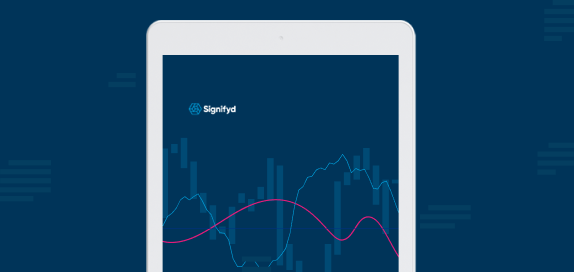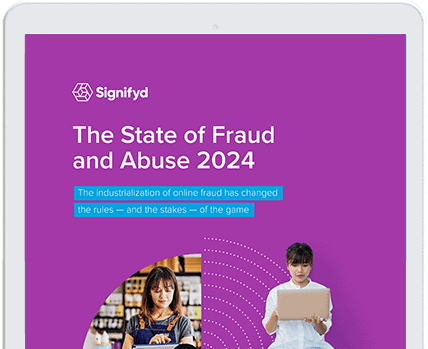Shopify’s recent shutdown of its Fraud Filters solution has merchants who used it scrambling to come up with alternative ways to fully protect their ecommerce businesses from online fraud.
What you need to knowNo doubt the end of Fraud Filters was disruptive and discombobulating. Still, there is an upside for merchants who chose to use the end of Fraud Filters as a forcing event. It’s a forcing event to consider what fraud protection should look like in the AI era. We’re here to help with a blog post that will:
|
It’s not as if Shopify stopped providing fraud protection options. As the ecommerce platform pointed out to customers, they could switch to Shopify Flow for protection. The platform also provides fraud analysis and Shopify Protect for some orders for merchants using the Shop Pay digital wallet. Most importantly, the platform provides third-party fraud solutions in its app store, the significance of which we’ll get to shortly.
While Shopify’s fraud tools are helpful, a number of merchants on message boards pointed out that moving from Fraud Filters to Flow is hardly seamless. The transition from one tool to the other is not as easy as porting the rules from Fraud Filters over to Flow. Some rules cannot be transferred, including rules that haven’t been activated in the past year.
Moving rules from Fraud Filter to Flow presented some challenges
One merchant reported in a community forum that they managed to move three of their 1,945 rules from Fraud Filters to Flow, which was a start. “It’s the other 1,942 that I’m worried about,” the merchant wrote. Another said their operation had 20,000 Fraud Filter rules spanning three storefronts and that they found it impossible to make the transition.
Taking advantage of the full range of Shopify’s fraud protection offerings requires some hunting around and gathering a variety of point solutions into the configuration that best serves a merchant’s needs. Once configured, the assembled solution requires care and feeding — writing new rules, eliminating obsolete ones and keeping tabs on the arrangement’s performance.
That sort of hands-on approach might be sufficient for a relatively small ecommerce operation. But even a small operation is likely to have aspirations to grow bigger — perhaps progressively bigger over a long time. Keeping up with changing fraud threats and the rules needed to stymie them while handling the increase in orders resulting from healthy growth, is not sustainable.
Maybe disruption was a positive for Shopify merchants
Chances are that running in that kind of accelerating rat race would eventually harm the efficacy of a merchant’s fraud protection or the customer experience that the merchant offered — or possibly both.
No doubt, the end of Fraud Filters, which became official on Jan. 31, was disruptive. But there is another way to look at the situation. A sudden change to a key pillar of a merchant’s operation is an opportunity to take in the big picture, a chance for a merchant to reconsider their entire fraud protection strategy. It’s a chance to consider not only what fraud protection needs to look like today, but what it needs to look like years from today and consider the best path to get from here to there.
That’s where the significance of the third-party solutions available in the Shopify App Store comes in. Signifyd is among the solutions you’ll find in the Shopify App Store and not surprisingly it is the fraud protection app that we are most familiar with.
Six ways third-party apps can enhance Shopify’s fraud protection
So, let’s take a look at six ways a third-party app like Signifyd could fit with a Shopify fraud prevention strategy.
- Third-party apps can provide a holistic fraud solution. Merchants can download the Signifyd app from the Shopify store and start relying on its comprehensive fraud protection immediately. No need to assemble different pieces of the fraud-fighting puzzle.
- Signifyd is an automated solution. Its Commerce Protection Platform relies on artificial intelligence and a large and mature data set to sort fraudulent from legitimate transactions based on thousands of signals. Good orders are shipped. Bad orders are declined. Those that are too close to call are reviewed by human experts.
- Signifyd grows with a merchant’s growth. Because Signifyd is cloud-based, it has an elastic capacity to process a growing number of transactions in real time.
- Signifyd is not rules based. Because Signifyd’s AI-driven models learn from transaction, behavioral and historical data, merchants don’t have to write rules that anticipate every different wrinkle in a fraud attack. Nor do merchants need to import existing fraud rules from legacy fraud tools.
- Signifyd’s precision and guarantee make it a revenue optimizer. Because Signifyd has previously seen signals from 98% of the orders placed on its Commerce Network, it approves more good orders than systems without those insights. That makes for higher incremental sales and superior shopping experiences for legitimate consumers whose orders are approved quickly and without question. And because Signifyd guarantees its decisions, merchants are reimbursed for approved orders that turn out to be fraudulent.
- Signifyd adds intelligent humans to the fraud-fighting equation. The Signifyd Commerce Protection Platform relies on cutting-edge machine learning models driven by artificial intelligence to detect and turn away fraud. It also counts on data and risk experts to monitor and tune those models based on real-world conditions. And it provides award-winning customer success professionals who can offer advice and expertise in areas of fraud, abuse and ecommerce.
How Signifyd can turn disruption into opportunity
Signifyd already protects more than a thousand Shopify merchants, increasing revenue while protecting billions of dollars in orders on the Shopify platform. Cymbiotika, for instance, is a health and supplement company that turned to Signifyd to reduce false declines, combat reseller abuse and work with a solution provider that could scale with them. As a result, Cymbiotika saw a significant boost in additional revenue and a 93% reduction in chargebacks.
Given the fast-paced and low-margin nature of running an ecommerce business, an unexpected change can feel like a major obstacle on the path to success. But it can also provide an opportunity to take a fresh look at some assumptions and areas of the business that could benefit from more scrutiny.
Shopify’s decision to sunset Fraud Filters is one such opportunity.
Edited feature photo by Donald published under a Creative Commons license.
Pondering the post-Fraud-Filters world? We can help.









